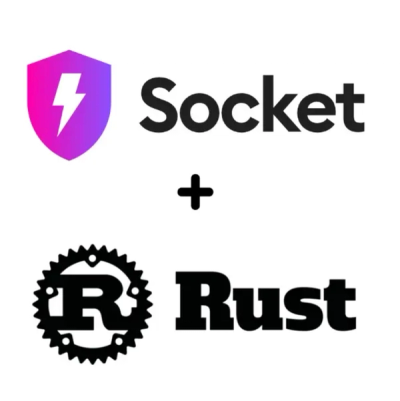
Security News
Crates.io Users Targeted by Phishing Emails
The Rust Security Response WG is warning of phishing emails from rustfoundation.dev targeting crates.io users.
@contexture/core
Advanced tools
The Contexture DSL (Domain Specific Language) Processor
Contexture is a tool for running the Contexture DSL, which is primarily about abstracting queries/filters and results/aggregrations.
Each leaf node in a Contexture Tree can affect other leaf nodes (e.g., acting as a filter) and has results of it's own (e.g. a top N aggregation or search results) which are affected by the other nodes.
Non leaf nodes describe how leaves relate to each other, e.g. as a boolean join of and/or, and Contexture is smart enough to make sure that filters are included based on their joins - e.g. two nodes ored together won't affect each other's results, but they will if they're anded together.
The canonical example of a Contexture Node is faceted search, where you have a checkbox list that is both a filter (restricts results to things checked) and an aggregation (show the top n values which can be checked). Contexture allows them to be nested in advanced searches with boolean joins like and/or/not.
Contexture takes as input the tree DSL and returns it hydrated with contextual results on it's context, and uses providers for different backing data stores (like elasticsearch and mongo) to actually run the search results. This means that Contexture typically runs on the server, but it doesn't have to - you can build providers that call APIs instead of directly hitting a database.
While the Contexture DSL can be built anyway you'd like, it pairs well with the @contexture/client, which leverages the generic structure and makes sure things update only when needed.
let Contexture = require('@contexture/core')
let provider = require('@contexture/provider-mongo')
let types = require('@contexture/provider-mongo/dist/types')
let schemas = require('./path/to/schemas')
let process = Contexture({
schemas,
providers: {
mongo: provider({
getMongooseClient: () => mongoose,
types,
}),
},
})
Then later:
await process(dsl)
or
await process(dsl, {
debug: true,
})
Process can handle a few options:
| Option | Description |
|---|---|
debug | Sends _meta as part of the response, which includes per node request records, relevant filters, and other debug info |
onResult | A callback which is called whenever a node finishes producing it's results, which can be used to send partial results over websockets for example |
Contexture will process a serialized contexture tree dsl, where each leaf node has a Schema representing what it is querying and which data Provider it uses, along with a Provider-specific Type that defines how it applies filters to other contexts and how it interacts with its Provider to get results.
Schema
Schema represents a type of data - like a model in an ORM or a Schema in GraphQL. It has one or more1 Providers to tie it to a real data source, and well as configuration specific to each Provider - things like which index, type, or collection to use and type specific config like how to build a summaryView for results or what fields to highlight by default.-Provider
Provider contains all of the database2 specific logic, including how to actually run a search (runSearch), how to combine filters in a group (groupCombinator), any client specific configuration (which in practice is overridden/injected at runtime from sails config), and implementations for all of its TypesType
Type is an implementation of a specific node type for a given Provider. It can include functions to produce a filter (filter), how it interacts with the Provider's search function to generate results (result), and checks3 to determine if a filter should be included (hasValue) or if results should be run (validContext). All of the methods are optional - some node types only have filters (like bool or number), some only have results (like dateHistogram and terms_stats), and others have both (like facet). All of the functions can be asynchronous by returning a promise, allowing more complex filters like the geo filter which can geocode addresses on the fly.For each of these steps, walk the tree in a parent-first DFS traversal, with each function optionally asynchronous by returning a promise. Along the way, intermediate data is added to contexts on an object called _meta. For each context, every type/processor combination is pulled on the fly, meaning it will use the correct local Provider and Type info even if some contexts have different schemas4
_meta, etc)materializedPaths (used later by relevantFilters)filter for each item if it hasValuerelevantFilters for each item (all filters combined in their groups by the groupCombinator except for their own filters and any filters related to them in the tree via an ORresult for each item if it hasValidContext and is not filterOnly (as determined by the client event architecture), passing a pre curried search function that includes relevantFilters so types don't need to worry about it - logging each request on _meta.requeststook values for all requests to get an accurate number and pass results to onResult as they come in if they are defineddebug mode, scrub off _meta from the responseAll Provider must specify the following properties:
groupCombinator
runSearch
relevantFilters function and combined with groupCombinators), and the criteria for the current context's results (eg aggs for an es aggregation or highlight for es results). This function can conditionally do different things based on what it is passed - like knowing if it should run an aggregation or a scan/scroll.types
Provider's type implementations. It can optionally include a type called default whose properties will be used if one of its types are missing something (e.g specifying the default behavior of validContext to always allow or prevent results from running)Additionally, a provider may expose config for it's client (e.g. hosts or request timeout for elasticsearch).
All Types can implement any if the following properties. All are optional:
filter
OR). Typically JSON but can be a string as in the SQL case.hasValue
result
runSearch with filters and everything pre-applied (so it is really easy to run searches), the current schema, and the current provider for advanced use cases. This can run one or more async calls - as long as it returns a promise for the final result. If you need to do additional filtering logic, you can use runSearch on the provider directly instead of the convenient curried version and inspect the _meta.relevantFilters property to see which filters would have been auto-applied, allowing you to do literally any kind of search you want - but there hasn't been a need for this yet.validContext
Schemas are named by convention based on their filename and should be in camelCase. A schema must have one or more provider specific set of configuration properties.
If there are multiple Providers, it will default to the first one unless a provider is also specified with the schema on the data context itself ↩
Does not actually have to be a database - a provider could talk to an API, the file system, or even make stuff up on the fly ↩
These checks are above and beyond what the client specifies and are meant as last minute validation - the client is intelligent enough to not send up things without values or missing properties, but this provides an additional check in case something gets through (e.g., a terms_stats without a sort field). ↩
This completely solves and obviates the need for the MultiIndexGroupProcessor on the client and handles it in much more elegant way (and in a single service call, instead of n services calls). A caveat is that it does not currently handle schemas from different providers (because filters are generated based on their context's local schema), so you can't currently mix a elasticsearch schema with a mongo schema (because it could try to call mongo with elastic search filters for example). ↩
FAQs
The Contexture (aka ContextTree) Core
We found that @contexture/core demonstrated a not healthy version release cadence and project activity because the last version was released a year ago. It has 1 open source maintainer collaborating on the project.
Did you know?

Socket for GitHub automatically highlights issues in each pull request and monitors the health of all your open source dependencies. Discover the contents of your packages and block harmful activity before you install or update your dependencies.

Security News
The Rust Security Response WG is warning of phishing emails from rustfoundation.dev targeting crates.io users.

Product
Socket now lets you customize pull request alert headers, helping security teams share clear guidance right in PRs to speed reviews and reduce back-and-forth.

Product
Socket's Rust support is moving to Beta: all users can scan Cargo projects and generate SBOMs, including Cargo.toml-only crates, with Rust-aware supply chain checks.